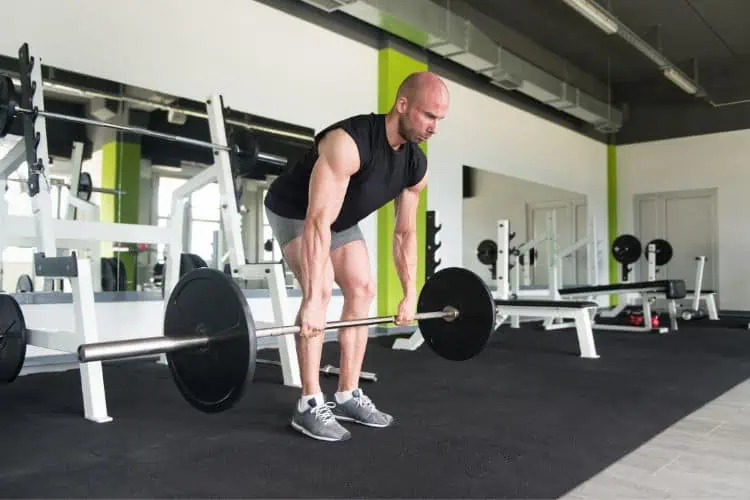
The Romanian Deadlift (RDL) is a staple exercise for strength enthusiasts and fitness novices alike. Renowned for its ability to build powerful hamstrings, a strong lower back, and impressive glutes, the RDL deserves a place in any workout routine. In this comprehensive guide, we will delve into the mechanics, benefits, variations, and tips for mastering the Romanian Deadlift.
What Are Romanian Deadlifts?
The Romanian Deadlift is a compound exercise primarily targeting the posterior chain, which includes the hamstrings, glutes, and lower back. Unlike the conventional deadlift, the RDL focuses on a hip-hinge movement and uses a limited range of motion, making it a more isolated exercise for the posterior muscles.
Origins of The Romanian Deadlift
The exercise owes its name to Romanian Olympic lifter Nicu Vlad, who popularized it as a key component of his training regimen. Vlad used this technique to enhance his strength and flexibility, making it a cornerstone exercise in strength training and athletic programs worldwide.
Benefits of Romanian Deadlifts
Incorporating Romanian Deadlifts into your routine offers numerous benefits, including:
1. Strengthening the Posterior Chain
RDLs effectively target the hamstrings, glutes, and lower back, improving strength and power. This is essential for athletes looking to enhance performance in sports requiring explosive movements, such as sprinting or jumping.
2. Improved Hip Mobility
The hip-hinge movement in RDLs promotes flexibility and mobility in the hip joints, reducing the risk of injuries and improving overall movement patterns.
3. Enhanced Core Stability
Maintaining a neutral spine during the exercise engages the core muscles, improving stability and posture.
4. Injury Prevention
By strengthening the posterior chain and improving mobility, RDLs can help prevent common injuries, such as lower back pain and hamstring strains.
5. Versatility and Adaptability
The Romanian Deadlift can be performed with a variety of equipment, including barbells, dumbbells, kettlebells, and resistance bands, making it suitable for any fitness level.
How to Perform Romanian Deadlifts
Mastering the RDL requires proper form to maximize benefits and minimize the risk of injury. Follow these steps for a flawless execution:
Step 1: Set Up
- Equipment: Choose a barbell, dumbbells, or kettlebells with an appropriate weight.
- Starting Position: Stand with your feet hip-width apart, holding the weight in front of your thighs with a pronated (overhand) grip.
- Posture: Keep your chest up, shoulders back, and core engaged. Maintain a slight bend in your knees.
2: The Hip-Hinge Movement
- Initiate the Movement: Begin by hinging at your hips, pushing them backward as you lower the weight.
- Maintain Alignment: Keep the weight close to your legs, and ensure your back remains straight and neutral.
- Range of Motion: Lower the weight until you feel a stretch in your hamstrings, typically when it reaches mid-shin level.
3: Returning to Start
- Reverse the Movement: Drive your hips forward to return to the starting position, keeping the weight under control.
- Final Position: Fully extend your hips and stand tall, squeezing your glutes at the top.
Common Mistakes to Avoid
- Rounding the Back: Always maintain a neutral spine to prevent injury.
- Overextending the Knees: Avoid locking your knees; keep a slight bend throughout the movement.
- Using Excessive Weight: Start with lighter weights to perfect your form before progressing.
- Improper Grip: Ensure a secure grip to avoid losing control of the weight.
Romanian Deadlift Variations
Adding variations to your routine can target muscles differently and keep your workouts engaging. Here are some popular RDL variations:
1. Single-Leg Romanian Deadlift
This variation increases the challenge by requiring balance and stability, further engaging the core and targeting each leg individually.
How to Perform:
- Stand on one leg while holding a dumbbell in the opposite hand.
- Perform the hip-hinge movement while keeping the non-working leg extended backward for balance.
- Return to the starting position and repeat on the other side.
2. Dumbbell Romanian Deadlift
Using dumbbells allows for a greater range of motion and emphasizes unilateral strength.
How to Perform:
- Hold a dumbbell in each hand and follow the same steps as the standard RDL.
- Keep the dumbbells close to your legs throughout the movement.
3. Kettlebell Romanian Deadlift
Kettlebells provide a different grip and center of gravity, adding variety to the exercise.
How to Perform:
- Hold a kettlebell with both hands or one in each hand.
- Perform the hip-hinge movement while keeping the kettlebell(s) close to your body.
4. Resistance Band Romanian Deadlift
Ideal for beginners or those without access to weights, resistance bands offer adjustable tension and safety.
How to Perform:
- Anchor the band under your feet and hold the ends with both hands.
- Perform the RDL movement while maintaining tension in the band.
Programming Romanian Deadlifts Into Your Routine
Frequency and Volume
- Beginners: Start with 2-3 sets of 8-10 repetitions, focusing on form.
- Intermediate/Advanced: Perform 3-4 sets of 6-8 repetitions with heavier weights.
- Athletes: Incorporate RDLs 2-3 times per week as part of a posterior chain or lower body-focused session.
Pairing with Other Exercises
RDLs work well when paired with exercises like:
- Squats: Complement RDLs by targeting the quads and glutes.
- Lunges: Enhance unilateral leg strength.
- Pull-Ups: Build upper body strength alongside posterior chain development.
Rest Periods
- Allow 60-90 seconds of rest between sets for hypertrophy.
- For strength-focused training, rest for 2-3 minutes between sets.
Tips for Maximizing Results
1. Focus on Form
Prioritize proper technique over heavier weights to prevent injury and maximize effectiveness.
2. Warm Up Effectively
Incorporate dynamic stretches and activation exercises, such as glute bridges or hamstring stretches, before performing RDLs.
3. Track Progression
Gradually increase the weight or volume over time to ensure consistent progress.
4. Use Straps if Necessary
If grip strength limits your performance, consider using lifting straps to maintain a secure hold on the weight.
Romanian Deadlifts for Different Goals
1. Muscle Hypertrophy
For muscle growth, focus on a moderate weight and higher repetitions (8-12 reps per set). Ensure a controlled tempo to maximize time under tension.
2. Strength Development
To build strength, use heavier weights and lower repetitions (4-6 reps per set). Maintain perfect form to prevent injury.
3. Athletic Performance
Incorporate RDLs as part of a comprehensive strength and conditioning program to enhance posterior chain strength and explosive power.
Safety Precautions
- Consult a Professional: If you’re new to RDLs, work with a coach or trainer to ensure proper form.
- Avoid Overtraining: Allow adequate recovery between sessions to prevent fatigue and injury.
- Listen to Your Body: Stop the exercise if you experience pain or discomfort.
The Romanian Deadlift is a powerful exercise for building strength, enhancing mobility, and preventing injuries. Whether you’re an athlete, a fitness enthusiast, or a beginner, mastering the RDL can significantly improve your overall fitness and performance. By understanding its mechanics, benefits, and variations, you can confidently incorporate this essential movement into your workout routine and achieve your fitness goals.

